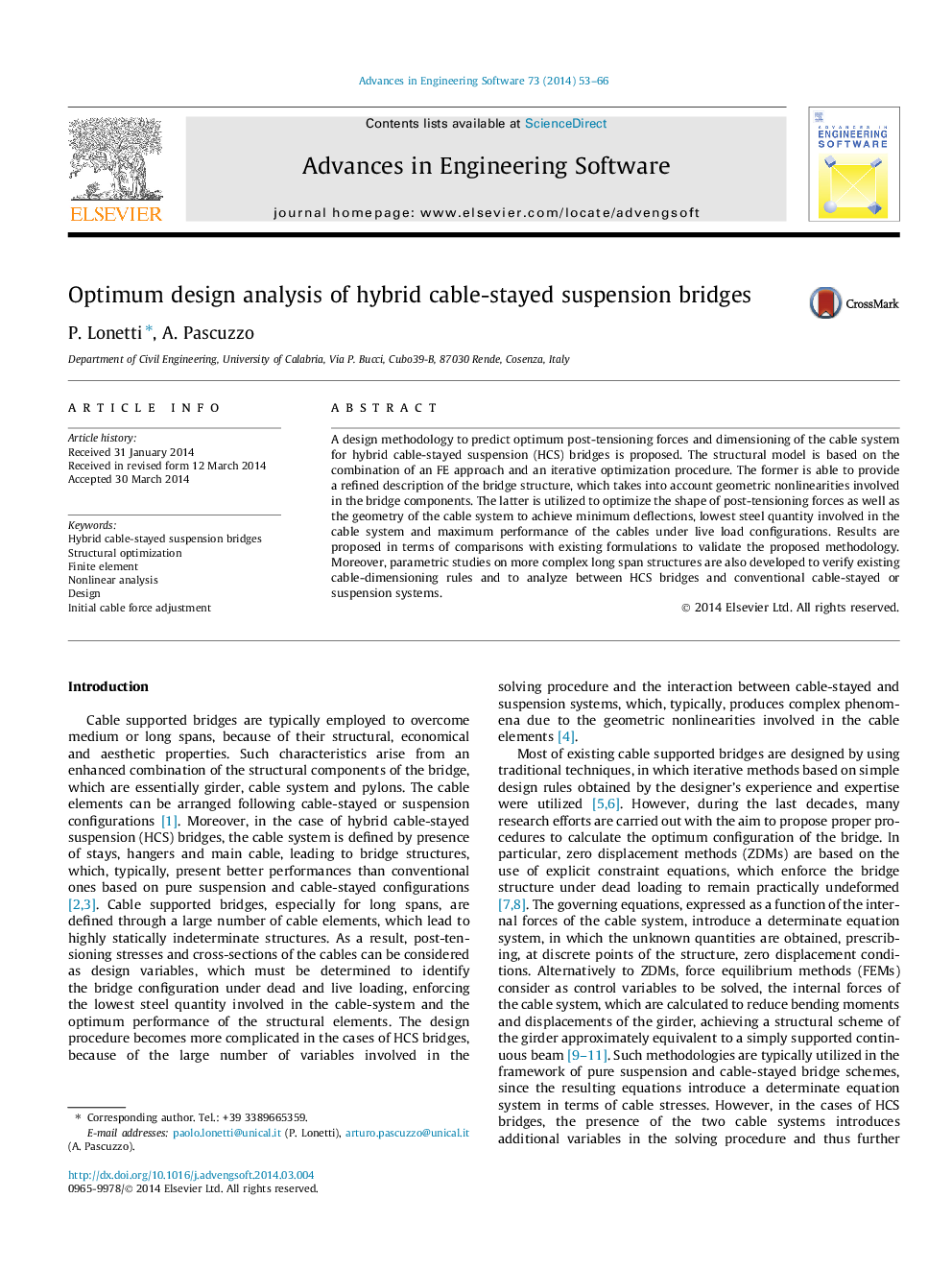| Article ID | Journal | Published Year | Pages | File Type |
|---|---|---|---|---|
| 566111 | Advances in Engineering Software | 2014 | 14 Pages |
•A design methodology to predict cable configuration under DL and LL is proposed.•The model evaluates the cable system involving the lowest steel quantity.•A FE approach coupled with OMs is utilized to derive the design configuration.•A two-step nonlinear algorithm based is developed, avoiding convergence problems.•The formulation is validated with existing data available from the literature.
A design methodology to predict optimum post-tensioning forces and dimensioning of the cable system for hybrid cable-stayed suspension (HCS) bridges is proposed. The structural model is based on the combination of an FE approach and an iterative optimization procedure. The former is able to provide a refined description of the bridge structure, which takes into account geometric nonlinearities involved in the bridge components. The latter is utilized to optimize the shape of post-tensioning forces as well as the geometry of the cable system to achieve minimum deflections, lowest steel quantity involved in the cable system and maximum performance of the cables under live load configurations. Results are proposed in terms of comparisons with existing formulations to validate the proposed methodology. Moreover, parametric studies on more complex long span structures are also developed to verify existing cable-dimensioning rules and to analyze between HCS bridges and conventional cable-stayed or suspension systems.
